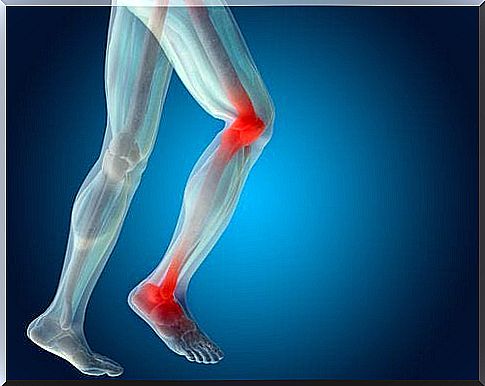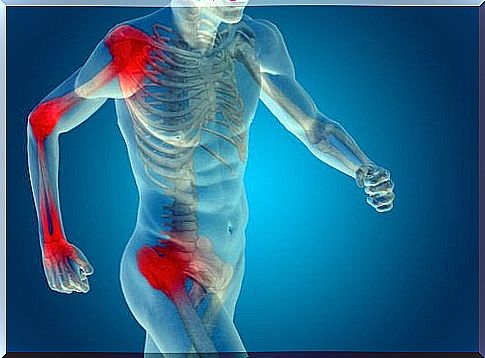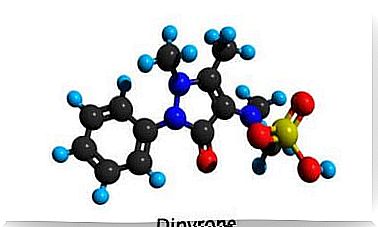Building Up Cartilage Through Nutrition: Tips And Advice
Cartilage has an important function: These flexible links between the bones act as a buffer to dampen impact movements and prevent the bones from rubbing against each other. It is therefore important to take care of the cartilage and to consume the right foods regularly.

As long as there are no complaints, we are usually not aware of how important cartilage is to us. Their job is to protect our joint structures. The risk of injury here is particularly high for athletes, very active people and the elderly. But you can build up cartilage through nutrition.
Proper nutrition can help regenerate cartilage tissue. Would you like to learn more about this topic? Then just read on.
Cartilage is particularly hard hit
Cartilage is an important link between the bones and enables the joints to move. In terms of structure, they are not as hard as bones, but also not as elastic as the muscles.
Once the cartilage tissue is damaged, it is very difficult to repair. This can lead to various types of pain, such as arthritis.
Among the injuries that lead to cartilage damage, sprains are the most common. The following areas are particularly affected:

- ankle
- knee
- Wrists
- Elbow
- Shoulders
Cartilage damage can also result from severe burns or accidents. These injuries can be very painful and also limit mobility.
What are the most common causes of cartilage problems?
- Aging
- degenerative diseases
- excessive physical activity
- obesity
- stress
- Carrying heavy loads
- Nutritional deficiency
The health of the cartilage, especially the knee, is critical. The knee joints carry almost your entire body weight and are therefore particularly important. Common symptoms of cartilage injuries are:
- Pain when moving the limb or joint
- limited mobility in the affected area
- deformity
- Inflammation
- Redness
Building Cartilage Through Diet: Tips and Advice

You can build up cartilage through nutrition and maintain, strengthen and regenerate it in a natural way. A balanced eating plan should include the following key nutrients:
- Vitamins A, C and D
- Calcium
- Lysine
- phosphorus
- fluorine
- magnesium
- Proteins
It is also very important to drink enough water to keep the cartilage and joints hydrated. So don’t forget the 2 liters of water a day – your general health will also benefit from it.
For healthy cartilage and if you want to build up cartilage through nutrition, the following nutrients are particularly recommended:
Lysine
This active ingredient has the ability to rebuild the cartilage tissue. It is recommended to consume 12 mg per kg of body weight daily.
But in which foods is lysine actually contained? Legumes, red meat, eggs, cod, soy, cheese, dried fruit, and brewer’s yeast all contain lysine.
vitamin C

This excellent antioxidant helps to strengthen the immune system. It is also very important for collagen production. That is why vitamin C is essential for the regeneration of connective tissue.
It also improves the health of the blood vessels and supplies the blood with sufficient oxygen. This in turn has a positive effect on the healing of injuries.
This also allows you to build up cartilage through nutrition.
The following foods contain the most vitamin C: oranges, tomatoes, pineapples, peaches, cabbage, strawberries, kiwis, onions, peppers, tangerines, grapes and blackberries.
The minimum recommended daily amount is 75 mg for women and 90 mg for men.
Vitamin D
The best way to supply your body with vitamin D is to soak up some sun every day. This means that the body can produce this vitamin itself.
By vitamin D to improve the mobility of joints and also prevents diseases such as osteoporosis and arthritis before. In addition, vitamin D can also be very effective in preventing cartilage problems.
Vitamin D can also be absorbed through certain foods. These include whole grain bread, milk, whole grain cereals, salmon, herring and oysters.
Collagen

This protein structures cartilage tissue, tendons and bones. Various studies have shown that collagen promotes the combination of these elements.
You can easily consume collagen through gelatin. Make sure, however, that this does not contain too many calories and sugar, as sugar hinders the positive effects of collagen.
By the way, gelatine can not only be used for desserts. There are also delicious hearty recipes for this.
Gelatine can be used to regenerate the cartilage on the hips and knees particularly well. Nutritionists therefore recommend consuming 10 grams a day.
If you take gelatin regularly, you can get rid of the symptoms of osteoarthritis completely.
Spices and anti-inflammatory medicinal plants
You can also take various herbs to relieve cartilage or joint problems. For example, willow and African devil’s claw are recommended.
But ginger and turmeric can also be very effective.
You can make tea from the herbs. Of course, the spices can also be used in various recipes.
This way you can easily improve the mobility of your joints.
Omega-3 fatty acids

To strengthen the cartilage, especially in the knee joints, it is also recommended to reduce the consumption of omega-6 fatty acids (for example from fast food).
Instead, you should eat lean, protein-rich foods (such as tofu and beans) and omega-3 fatty acids.
It has been shown that omega-3 has anti-inflammatory effects.
That’s why we recommend tuna, seafood, sardines, scallops, chicory, kale, Swiss chard, hemp seeds, chia seeds, pumpkin seeds, sacha inchi, flaxseed oil and fish oil.
Healthy habits to prevent cartilage wear and tear
It is important to prevent cartilage wear and tear in the long term. Proper nutrition is not the only thing that plays a role. Different daily habits are also very important. Here are a few pieces of advice:
- Begin fitness training slowly and intensify it gradually.
- It’s best to walk a little every day.
- Stretching exercises for legs, shoulders, hips, etc.
- Also massage the endangered or vulnerable areas.
- Be careful when lifting heavy weights.
- Consult your doctor as soon as you notice symptoms.









